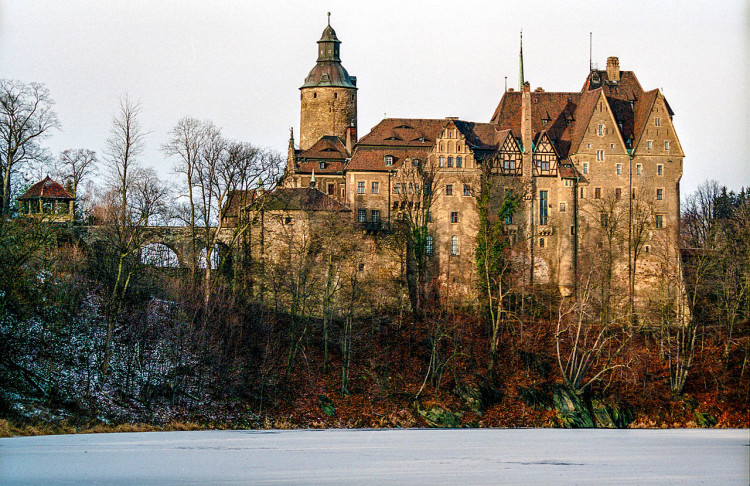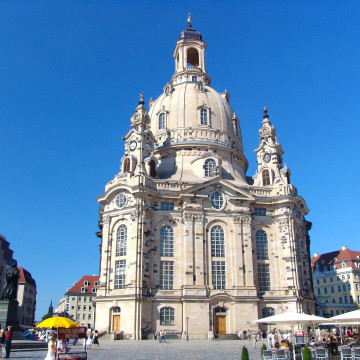Czocha Castle in the Sucha village (Poland) - it was built on the foundations of the 13th century stronghold
Where is located Czocha Castle?
Address of Czocha Castle is Sucha, 59-820 Leśna, Poland
show on map
When was built Czocha Castle?
Built date of Czocha Castle is 1241 - 1247

Facts, informations and history of Czocha Castle
Czocha Castle - a fortified castle, located in south-west Poland, in the Lower Silesian Voivodeship. The building is situated on an extended granite-gneiss hill promontory in the village of Sucha.
The castle was built in 1241-1247 as a wooden border fortress on the Czech-Lusatian border, on the recommendation of the Czech King Wenceslaus I.
In 1253, as a brick fortress, it was transferred to Bishop Konrad von Wallhausen. In 1319, the complex became part of the Duchy of Henry I, and after his death it became the property of Prince Bolko II, was known at the time as the "Czajków castle". It consisted of: a three-storey residential building with a cylindrical tower - a courtyard, courtyards surrounded by defensive walls and an entrance led by a drawbridge.
In the mid-fourteenth century, the fortress was captured by Charles IV - the emperor and the king of Bohemia. In 1389, the castle went to the noble family von Dohn. At the beginning of the 15th century, the fortress was besieged by the Hussites, who finally captured it in 1427.
In 1453, the castle was purchased by the von Nostitz family, which owned it for 250 years. At that time, the castle was rebuilt twice, in 1525 and in 1611, then the walls of the castle were strengthened to withstand the Swedish siege during the Thirty Years' War. Then another residential building, armory, north and south bastion and a castle with a moat separating them from the castle was added.
In 1703 the castle was bought by Hartwig von Uechtritz, an influential courtier August II Mocny. In the middle of August 1793 Czocha castle burned down. In 1909, the ruins of the fortress were bought by a cigar manufacturer from Dresden, who employed the Berlin architect Bodo Ebhardt to restore the castle's former appearance.
In 1973, when the von & nbsp; Uechtritz family was the owners, a fire destroyed almost all the buildings with the exception of the chapel. The reconstruction lasted 5 years and was very expensive.
After the Second World War, the castle was released by soldiers of the Red Army. The stronghold was robbed many times. On February 1, 1946, the mayor of Leśna made the biggest theft - Kazimierz Lech and Krystyna & nbsp; von Saurma, the castle librarian. They discovered a castle lock and took away a full truck of goods, including Romanow coronation insignia, 100 icons, 60 busts of Russian tsars, jewelry, paintings and numerous porcelain tableware. In the late 1940s and early 1950s, the castle was home to refugees from Greece.
In 1952 the castle passed into the hands of the Polish army and served as a military house & nbsp; so it was removed from the official maps.
In September 1996 the Czocha castle was opened to the public as a hotel, café and conference center.
Currently, the castle consists of: upper castle - a set of buildings comprising an internal courtyard and a massive, cylindrical tower; upper and lower intervals separated by a moat with a suburb and two bridges; and walls with bastejami entry gate.
The genesis of the name of the castle is not fully known, it has undergone multiple renaming. Originally, in 1329, it was called the Caucasus castrum (Czajków), then the terminology of Schocha, Zhoche and Tzschoch was adopted, and finally, after the war, the name Czocha was adopted until today.
The castle was a setting for many film productions, including "The Witcher", "Secret of the Cipher Fortress", "Where is the General?" and "Backpack full of adventures." In the museum located here, you can admire many of the props from the film sets produced here.
"After the castle's fire in 1793, it was zealously rebuilt, but the purity of the style was not kept, because today it represents a mixture of old German burg and newer constructions.The walls of the castle and the former castle tower, surviving the fire, are five thick. The armory, which has several specimens of earlier war art, is also worth seeing here.Along one of the bastons there was a hidden stable, and the entrance gate was fitted with draw-out iron gates." - Weekly Illustrated (1881)
Architect of Czocha Castle
Construction/building type
Building Czocha Castle is of type Castle
Architectural style
Architectural style of Czocha Castle is Renaissance, Gothic
The Renaissance is an architectural style that developed in Europe in the 15th and 16th centuries, characterised by a return to the classical forms and elements of ancient Greek and Roman architecture. The Renaissance was a reaction to the Gothic style that prevailed in Europe from the 12th to 15th centuries and was associated with churches and sacred buildings. Renaissance means 'rebirth' and the style is considered the precursor to modern architecture. ... czytaj więcej.
Cost
Build cost of Czocha Castle is 1.5 million marks - the cost of buying a castle in 1909
Official website
The official website of the building, where up-to-date information can be found, is https://zamekczocha.com/
Location on map / How to get there


























Comments to Czocha Castle (3) Average rating: 5 Add comment / Rate building
Based on 3 comments